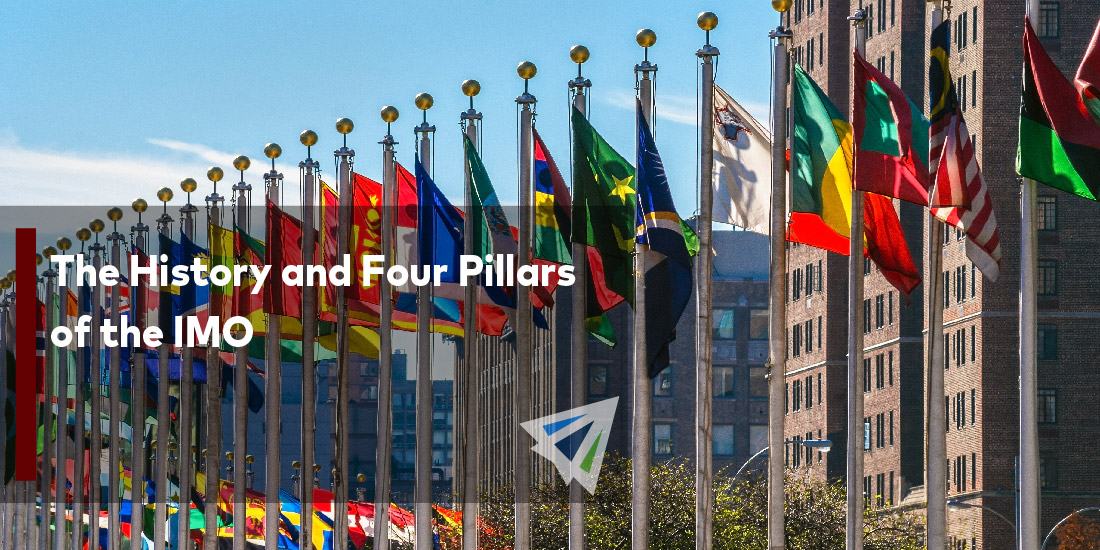The International Maritime Organization (IMO) is the United Nations’ specialized agency that is responsible for the safety and security of shipping and the prevention of marine and atmospheric pollution from ships.
The mission of the IMO, as a U.N. specialized agency, is to promote safe, secure, environmentally sound, efficient and sustainable shipping through cooperation. As of now, there are 175 nations that are members of the IMO. With the Faroe Islands, Hong Kong, and Macau being associate members of the organization.
Additionally, there’s several structural committees within the organization that deal with maritime issues, those include the Maritime Safety Committee (MSC), the Marine Environment Protection Committee (MEPC), the Technical Cooperation Committee (TCC), the Legal Committee (LC), and the Facilitation Committee (FC).
History and the Four Pillars of the IMO
The IMO, which is headquartered in London, was initially founded by a treaty voted on by the U.N. Maritime Conference in 1948. They held its first conference in 1959. Furthermore, the governing body of the IMO meets every two years.
The four pillars of the IMO include:
- Safety of Life at Sea Convention (SOLAS)
The first version was adopted in 1914 – in response to the Titanic disaster. The second version in 1929, the third in 1948, and the fourth in 1960. There was a version in 1974 that includes the tacit acceptance procedure. The 1974 Convention has been updated and amended on several occasions, as the IMO details on the website.
The main objective is to specify minimum standards for the construction, equipment and operation of ships, compatible with their safety. The current SOLAS Convention has general obligations and amendment procedure, in addition to 14 chapters that list various rules and regulations.
- International Convention on Standards of Training, Certification and Watchkeeping for Seafarers (STCW)
The STCW was first adopted on July 7, 1978, and was entered into force on April 28, 1984, with major revisions in 1995 and 2010.
The Convention prescribes minimum standards relating to training, certification and watchkeeping for seafarers which countries are obliged to meet or exceed – per the IMO website.
- International Convention for the Prevention of Pollution from Ships (MARPOL)
MARPOL was first adopted on November 2nd, 1973. The Protocol of 1978 was adopted in response to tanker accidents that occurred in 1976-1977. In 1997, a Protocol was adopted to amend the Convention and a new Annex VI was added and entered into force on May 19th, 2005, and has been updated by amendments throughout the years.
This is the main international convention covering prevention of pollution of the marine environment by ships from operational or accidental causes. This convention includes regulations that are in an effort to prevent and minimize pollution from ships (both accidental pollution and those from routine operations), and as of now, includes six technical Annexes.
- Maritime Labor Convention (MLC)
The MLC was adopted in 2006 by government, employer and worker representatives at a special ILO International Labor Conference, to provide international standards for the world’s first genuinely global industry.
It’s also a step towards ensuring fair competition and a level playing field for quality owners of ships flying the flags of ratifying countries.
The MLC has comprehensive minimum requirements for working conditions of seafarers including, conditions of employment, hours of work and rest, accommodation, recreational facilities, food and catering, health protection, medical care, welfare and social security protection.
Looking Ahead
Should you have any questions regarding this, please reach out to our team today.
Additionally, we have our weekly market updates that can provide you with relevant freight news, updates, developments across the industry, and more.
